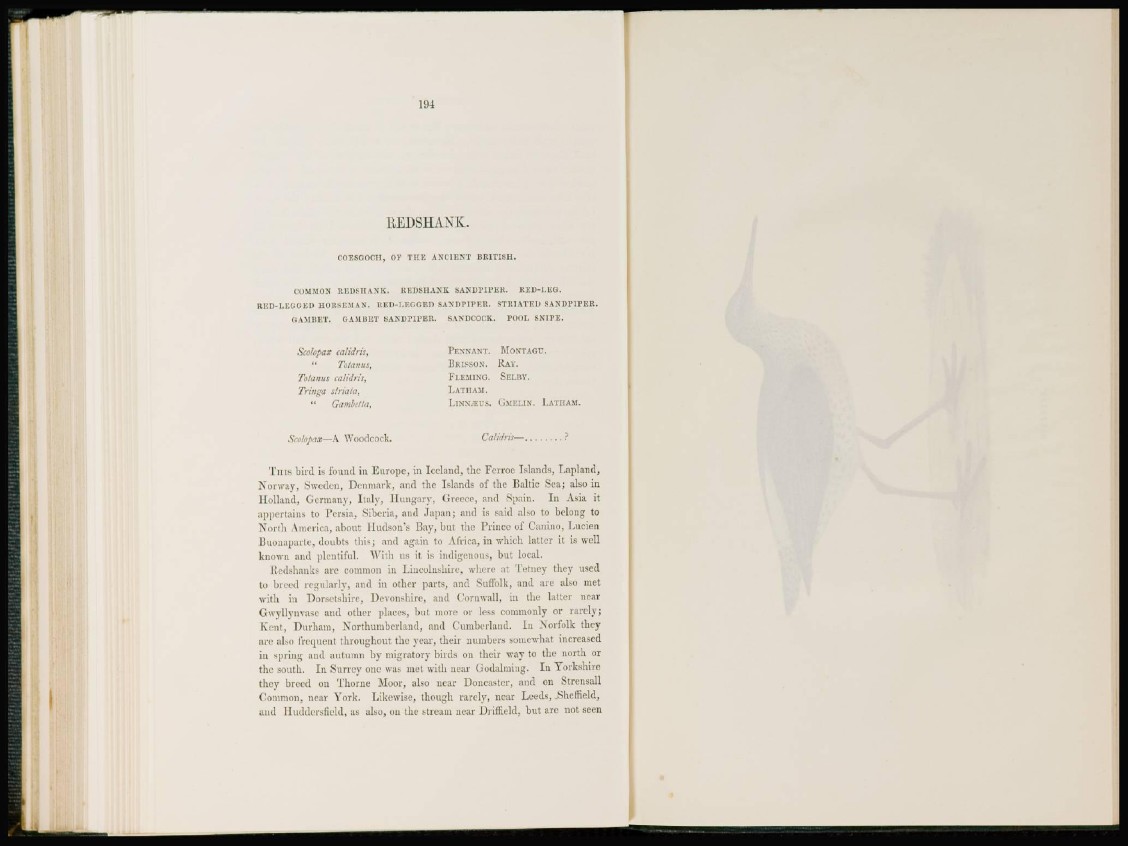
L94
REDSHANK.
C 0 E S G 0 C H , OF THE ANCIENT BRITISH.
COMMON REDSHANK. REDSHANK SANDPIPER. RED-LEG.
RED-LEGGED HOUSEMAN. RED-LEGGED SANDPIPER. STRIATED SANDPIPER.
GAMBET. GAMIiET SANDPIPER. SANDCOCK. POOL SNIPE.
Scohpax calidn's,
" Totanus,
Totanus calidn's,
Tringa striata,
" Gamhctta,
PENNANT.
BRISSON.
FLEMING.
LATHAM.
LINN.EUS.
MONTAGU.
RAY.
SELBY.
GMELIN. LATPIAM.
Scolopax—A Woodcock. Calidn's— ?
THIS bird is found in Europe, in Iceland, the Fcrroc Islands, Lapland,
Norway, Sweden, Denmark, and the Islands of the Baltic Sea; also in
Holland, Germany, Italy, Hungary, Greece, and Spain. In Asia it
appertains to I'ersia, Siberia, and Japan; and is said also to belong to
North America, about Hudson's Bay, but the Prince of Canino, Lucien
Buonaparte, doubts this; and again to Africa, in which latter it is weU
known and plentiful. With us it is indigenous, but local.
Redshanks are common in Lincolnshire, where at Tetney they used
to breed regularly, and in other parts, and Suffolk, and are also met
with in Dorsetshire, Devonshire, and ('ornwall, in the latter near
GwyUynvase and other places, but more or less commonly or rarely;
Kent, Durham, Northumberland, and Cumberland. In Norfolk they
are also frequent throughout the year, their numbers somewhat increased
in spring and autumn by migratory birds on their way to the north or
the south. In Surrey one was met with near Godalmiug. In Yorkshire
they breed on Thorne Moor, also near Doucaster, and on Strcnsall
Common, near York. Likewise, though rarclv, near Leeds, .Sheffield,
and Huddersfield, as also, on the stream near Driffield, but are not seen